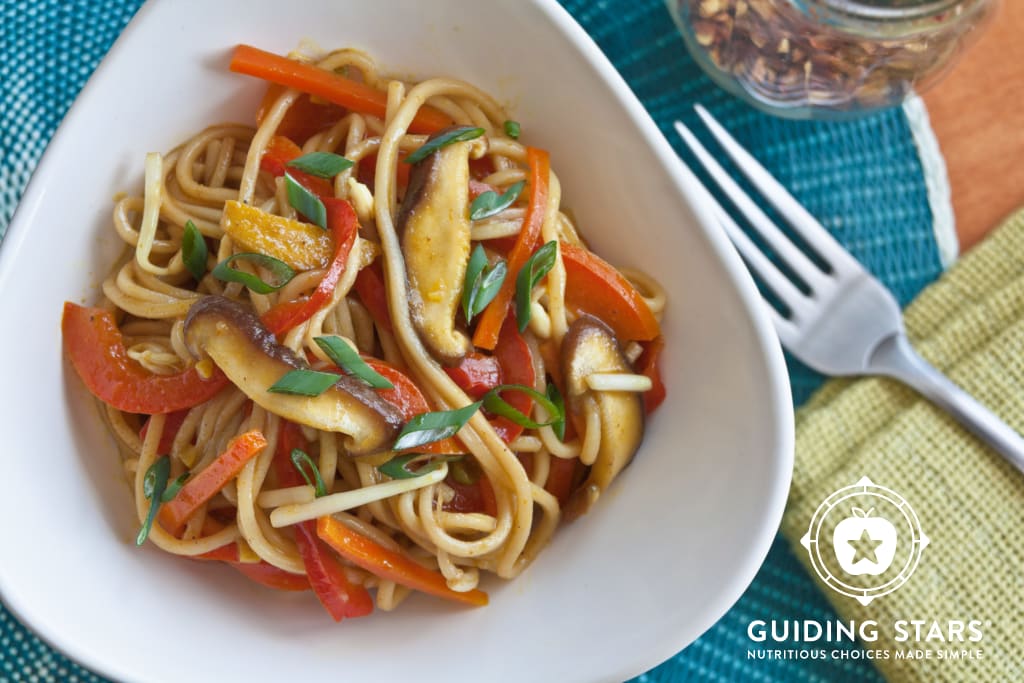Last week we talked about the challenge of crafting a tasty meal from the weird odds and ends in your cupboards. Today, we’re going to talk about the reverse of that approach to cooking: trying to make a specific recipe for which you don’t have quite all of the ingredients on hand. We’ve all been there before, that night when you really want to make lasagna but don’t actually have lasagna noodles in the house or the option to go get them. Of such moments is greatness born. For example: spaghetti pie. I’d have to muck with my recipe to get it to earn stars, but if you choose a no-added-sugar, low-sodium tomato sauce, use a modest amount of low-fat cheese, and include a generous amount of spinach, you’d be heading in the right direction. But I digress.
Right now, we’re all facing an unusual number of calls to culinary greatness resulting from not having all the ingredients on hand. It’s easier to get where you want to go if you keep in mind a few fundamentals about substitutions.
Fresh is optional.
Fresh rosemary is awesome, no argument. But…so is dried. And most of us have some number of dried herbs and spices in the house most of the time. Dried products concentrate the flavor, so you only need about a third what you need fresh. This rule doesn’t just apply to herbs. No onions or garlic? Check to see if you’ve got powdered. No lemons? Look for bottled lemon juice. (Or citric acid from an unused cheesemaking kit or Vitamin C tablets, which can be crushed into a powder, for that matter, although you’ll want to check for other active ingredients if you try that desperate trick.) No fresh version of an ingredient? Check your freezer or pantry for other forms of the same food. Fresh is delightful, but it’s often not necessary.
This tip applies to cooking on a tight budget, too. Fresh can be more expensive (especially with herbs!), and reaching for dried seasonings can take a recipe from impossible to affordable.
Be a Linnaeus in the kitchen.
Carl Linnaeus is famous for his classification system of all living things. Good substitution is all about thinking about food in families and species and so on. These are some examples of how I group foods to think about substituting one thing for another. Unless otherwise noted, what I generally do is try to substitute within a category when possible.
Herbs
- Mellow: Rosemary, sage, thyme, poultry seasoning
- Bright: Dill, chives, cilantro, mint
- Grassy: Parsley
Spices
- Sweet: Cinnamon, nutmeg, cardamom, curry powder, allspice
- Hot: Red pepper flakes, chili powder, paprika
- Tangy: Mustard, turmeric, ginger
- Earthy: Cumin, coriander
Vegetables
- Crunchy: Celery, peppers, snow peas, green beans, leafy greens, cucumbers
- Starchy: Carrots, sweet potatoes, squash, peas, corn
Fruits
- Sweet: Bananas, stone fruit, apples, pears, mango
- Tart: Berries, cherries, pineapple
Grains
- Very chewy: Barley, wheat berries, brown/black/wild rice, non-noodle pastas
- Less chewy: Quinoa, couscous, noodles, bulgur
Proteins
- White Meat: Poultry, pork, fish, seafood
- Lean Vegetarian: Lentils, beans, tofu
- Dark Meat: Beef, game meat
- Fatty Vegetarian: Nuts, seeds
Note: I shamelessly substitute most lean vegetarian proteins for most of my so-called white meat proteins and vice versa, and I rarely cook with the dark meat categories, not because I have a problem with them, but because they are outside of my flavor preferences and culinary comfort zone. So take my advice with a grain of no-salt-added spice mix.
Fats
- Liquid: Olive oil, canola oil, vegetable oil, peanut oil
- Solid: Avocado, butter, nut butters, mayonnaise, coconut oil
Note: In many, many places, you can also get away with using a liquid-at-room-temperature oil in place of a solid-at-room-temperature one, and it will generally reduce the saturated fat of your dish, which is a nutrient we should limit in our diets. Fun trick within the solid fats, though: you can replace butter on the outside of a grilled sandwich with mayonnaise. There are a couple of mayos that earn Guiding Stars too, so if you pick one of those options, you’ve just improved both the flavor and the nutrition of your sandwich.
Curried Vegetable Lo Mein
My challenge to you: make your own variation on this lo mein with the spaghetti you managed to stock up on and whatever veggie odds and ends you've got.
View recipe »Manage expectations.
Spaghetti pie is not lasagna. Some of you have been shaking your heads at me as you read this post, and fair dues. It’s not. It does, however, hit the same flavors and dish temperature and has textural similarities. Call the dish whatever it ends up being and communicate about the challenges you’re facing in producing a dish they really miss.
One great way to sell your family on the difference between what they want and what you’re able to produce with the ingredients on hand is to engage them in the problem-solving process. If your kids say, “I want mac and cheese!” and you’ve got nothing but squash and nutritional yeast to put on pasta (that works, actually, with a little dried mustard, garlic powder, and onion powder), invite them to help you workshop the best alternative you can come up together. Even if the end result isn’t ideal, they’ll have some ownership over the finished dish and you can laugh together about what goes wrong and brainstorm how to improve the next try.
